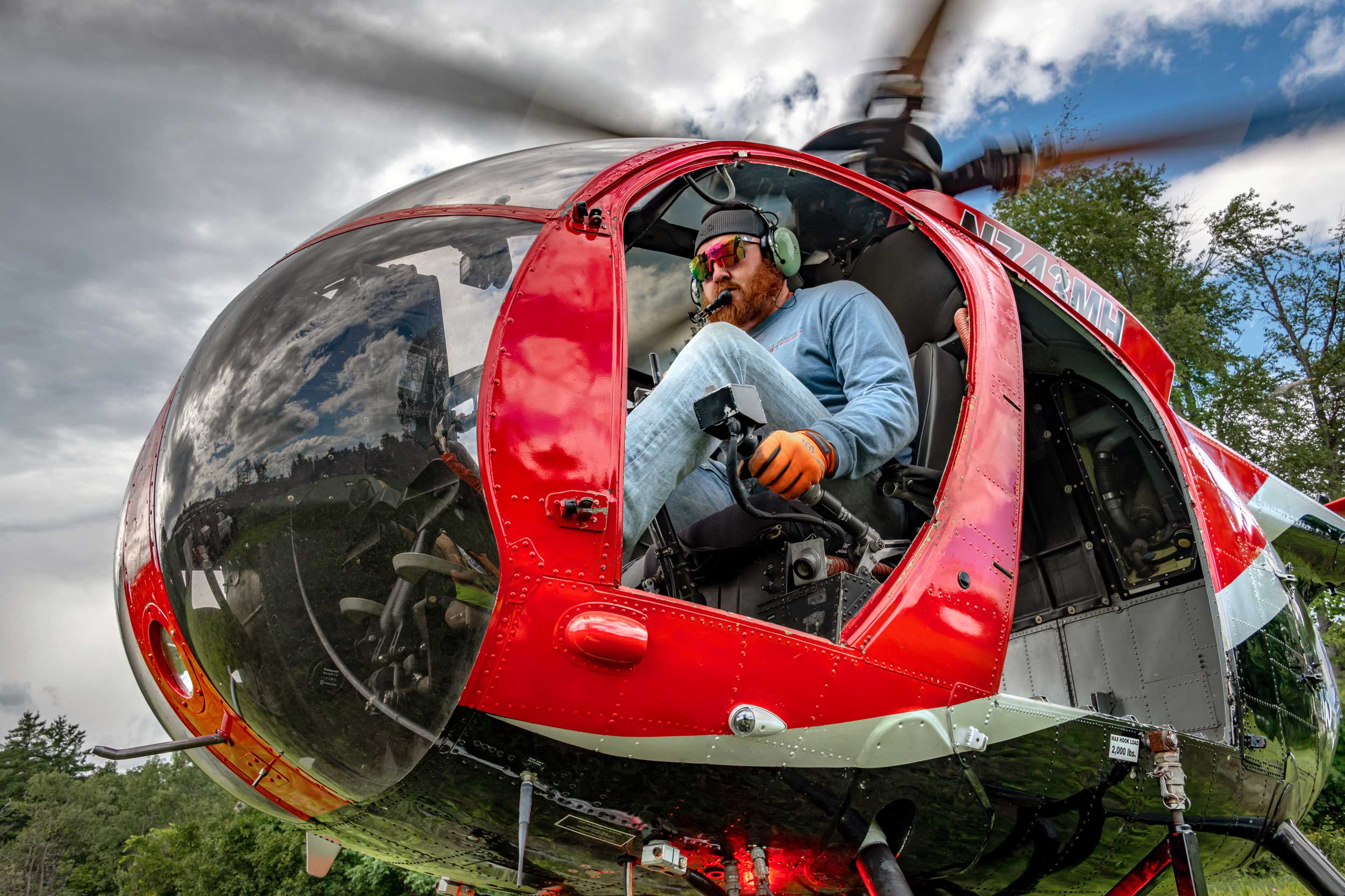5. Aerial saw pilot: Alan Stack
Who?
Rotor Blades’ aerial saw pilot Alan Stack provides airborne vegetation management services for overhead electric distribution and transmission lines. He flies with a huge 10-bladed saw hanging beneath his MD500 helicopter.
What’s it like?
Aerial saw pilots trim trees or help with powerline constructing. Side trimming is done with a 10-bladed, belt-driven aerial saw. Flying the 850lb saw isn’t like flying any other external load. You spend 100% of the flight time vertically referencing, which puts a demand on your back and neck.
Alan Stack said: “Most of our work is low and slow. Trimming speed is based on vegetation type: soft wood can be trimmed at 10mph, hard wood requires a slower trim. Knowing what speed to cut is essential to avoid saw damage.”
Who fits the role?
Helicopter pilots who are alert, precise, and situationally aware at all times.
Alan Stack: “With tree trimming there’s the saw, and when constructing powerlines, I fly aerial linemen as human external cargo. You’re holding someone 100ft below the helicopter, lowering them in-between the powerline phases with only inches of clearance to do their work. We work in what’s known as the height-velocity diagram or dead man’s curve: this means in case of an engine failure, you can’t safely auto-rotate to the ground. Therefore, excellent aircraft maintenance is of utmost importance.”
How to get there?
All new aerial saw pilots, whether they only have 1,500 flying hours or already 15,000 hours of vertical reference time, receive in-house training. They first become groundsmen and learn everything about saw maintenance before stepping into the helicopter. After riding along on short saw cycles, they practise picking up and setting down the saw, and eventually trim easier lines.
Alan Stack: “On average it takes a year of extensive in-house training until you’re ready to fly the saw.”
Why?
Alan Stack: “My job is fascinating. It’s 100% hands-on flying, demanding your complete attention at all times. A project, such as rebuilding Puerto Rico’s power system after hurricane Maria destroyed the power grid in 2017, and returning power to the 3.4 million people who’d been living in darkness for up to 11 months, is extremely satisfying.”
Any tips?
Alan Stack: “In the helicopter industry, networking is of utmost importance. Most employment opportunities arise from a recommendation, so make sure to stay in contact with your peers.”








